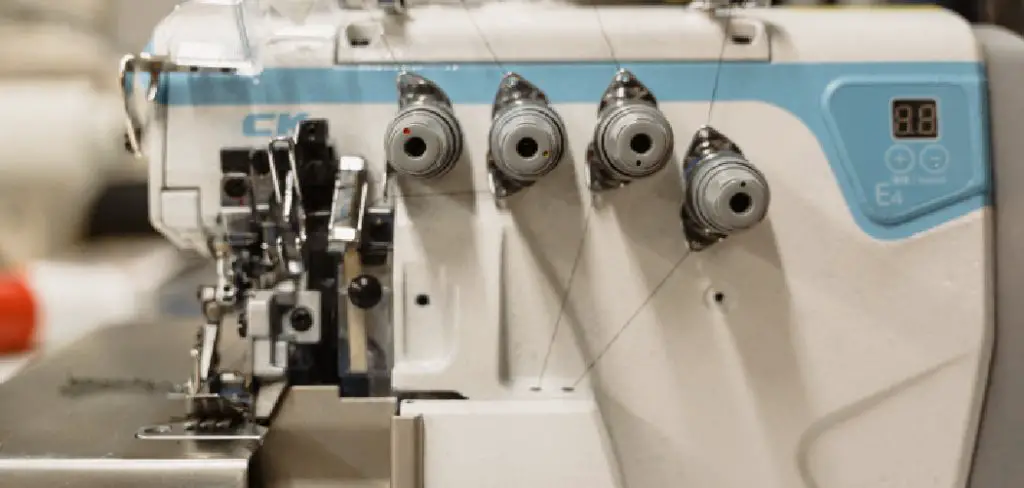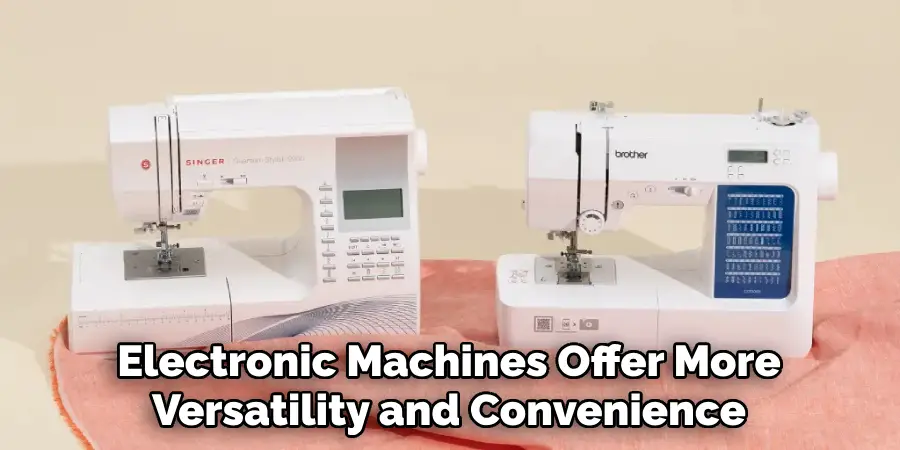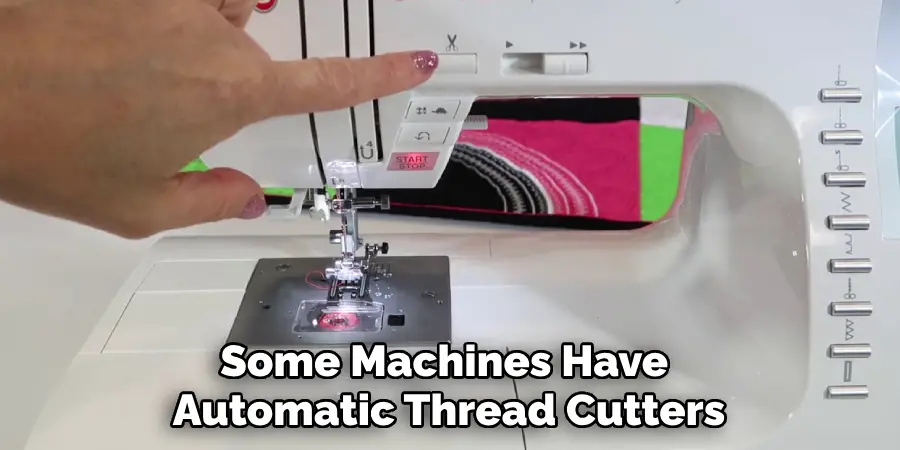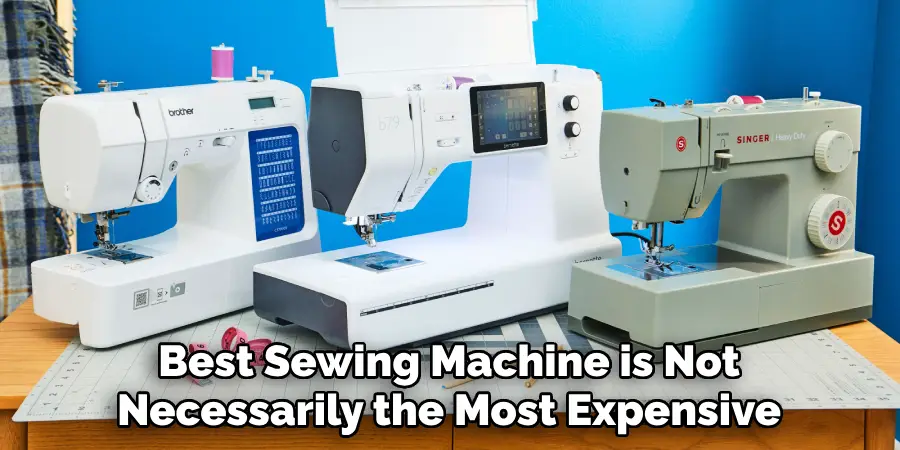Are you looking to learn a new craft or take your sewing projects to the next level? Then, choosing a suitable sewing machine is essential!

Sewing machines come in various shapes, sizes, and functionalities. Additionally, they can range from simple, primary machines to advanced models with hundreds of stitches and features. With so many options available on the market, it can be overwhelming to figure out which one is best for your needs.
But fear not – with this guide, we’ll break down everything you need to know about how to choose a sewing machine. From proper maintenance tips for different types of machines to considerations on what type of fabric you plan on using – we will cover it all! So fasten up your seat belt, and let’s get started!
Types of Sewing Machines
Here are the four main categories:
- Mechanical Sewing Machines: These machines use knobs and levers to control stitches and features. They are usually affordable, simple to use, and easy to maintain. However, they may not have advanced features like automatic needle threading or buttonhole options.
- Electronic Sewing Machines: These machines have various built-in stitches and features controlled by electronic buttons. They also have an LCD screen that displays stitch selections and settings. While more expensive than mechanical machines, electronic machines offer more versatility and convenience.
- Computerized Sewing Machines: These advanced machines use an automated system to control all stitching functions, making them highly precise and efficient. They come with many built-in stitches and features, including embroidery options. While expensive, they are perfect for avid sewers or those wanting to take their sewing projects to the next level.
- Serger Machines: Serger machines, also known as overlockers, are used primarily for creating seams and finishing edges on garments. They can sew at high speeds, giving a professional finish to sewing projects. They come with multiple spools of thread and different stitch options, making them perfect for advanced sewers or those looking to expand their skills.

10 Easy Steps on How to Choose a Sewing Machine
Step 1: Determine Your Budget
First and foremost, determine how much you are willing and able to spend. Sewing machines can range from about $100 for a primary mechanical machine to over $1000 for a high-end computerized model. Remember to consider the cost of any potential accessories or add-ons that may not be included with the machine. It’s essential to establish a budget before you start shopping so that you can narrow down your options and avoid overspending.
Step 2: Identify Your Sewing Needs and Goals
It’s important to identify your sewing needs and goals. Are you a beginner just starting to learn the basics, or are you an experienced sewer looking for more advanced features? Will you use the machine primarily for basic tasks such as hemming and mending, or do you plan to take on more complex projects like quilting or embroidery?

If you’re interested in specific types of sewing – like garment construction, home decor, or crafting – make sure the machine you choose can accommodate these tasks. Understanding your sewing needs and goals will help guide you in selecting a machine that best fits your requirements.
Step 3: Research Brands and Models
Once you’ve determined your budget and sewing needs, it’s time to research various brands and models. Some well-known sewing machine brands include Brother, Singer, Janome, and Bernina. Each brand offers a range of models with different features and prices. Review online reviews and compare features across other brands and models. This process will allow you to gauge the machine’s performance, reliability, and value for money, helping you make an informed decision.
Step 4: Check the Machine’s Stitching Options
The type and number of stitches a machine offers are crucial factors to consider when selecting a sewing machine. Primary machines often provide standard stitches like straight stitch and zigzag stitch, which may be enough for simple sewing tasks. However, if you plan on taking up more complex projects, you might opt for a machine that offers a wider variety of stitches, such as stretch stitches, blind hem stitches, or decorative stitches.
Additionally, check if the machine includes buttonhole options – a 1-step buttonhole feature can make the task much easier and more precise. Remember, it’s not about having the most stitches, but rather the right stitches for your specific sewing needs and goals.
Step 5: Evaluate the Machine’s Speed and Noise Level
The machine’s speed and noise level are important factors that many often overlook. A faster engine can save you time, especially if you plan on undertaking more significant projects. However, a higher speed can sometimes result in more noise. Consider a quieter machine if you will be sewing in a shared space or during odd hours.
Some machines have a speed control feature, allowing you to adjust the sewing speed according to your comfort and the project’s requirements. It’s always a good idea to test the machine in-store or watch online demonstrations to understand its speed and noise level. This will help you choose a sewing machine that ensures efficiency and comfort.
Step 6: Consider the Machine’s Ease of Use
When choosing a sewing machine, consider its ease of use. This includes factors like how easy it is to thread the needle, change the bobbin, select stitches, and adjust stitch length and width. Some machines have automatic thread cutters, needle threaders, and top-loading bobbins, which can significantly simplify the sewing process.

If you’re a beginner, choose a machine with straightforward controls and an easy-to-understand instruction manual. More advanced sewers might be comfortable with an engine with more complex features. Always review the user manual or watch instructional videos to ensure you’ll be comfortable using the selected sewing machine.
Step 7: Look for Essential Accessories
A valuable aspect to consider when choosing a sewing machine is the accessories that come with it. Essential accessories such as various presser feet (all-purpose foot, zipper foot, buttonhole foot, etc.), extra bobbins, needles, and a screwdriver can save you from making additional purchases. Some machines offer these accessories, significantly enhancing your sewing experience and allowing you to take on various projects. Scrutinize the list of accessories included and assess if they align with your sewing needs and goals.
Step 8: Evaluate the Machine’s Durability and Service Support
Consider the machine’s durability and the support provided by the manufacturer. A well-built, robust sewing machine will last longer and require less frequent servicing. Investigate the machine’s construction – machines with metal components are more durable than plastic parts. Additionally, consider the warranty period and service support offered by the brand.
A more extended warranty and readily available customer service can aid in troubleshooting and provide peace of mind. It’s also worth checking if the brand has a local service center for easy access to repairs and maintenance.
Step 9: Make a Decision and Purchase Your Machine
After carefully evaluating all the factors, it’s time to decide and purchase your sewing machine. It’s important to feel confident and comfortable with your choice. Remember, the best sewing machine is not necessarily the most expensive or with the most features. It’s the one that best suits your individual sewing needs and goals. Once you’ve made your choice, assemble the purchase from a reputable retailer, in-store or online. Finally, once you receive your machine, take the time to familiarize yourself with its functionality and practice using it.

Step 10: Regularly Maintain Your Sewing Machine
After purchasing your sewing machine, maintain it to prolong its life and optimal performance regularly. Essential maintenance may include cleaning the lint from the bobbin case, oiling mechanical parts as advised in the instruction manual, and changing needles after every project. Regular check-ups from professional service centers might be beneficial, mainly if the machine is used intensively.
By following these steps and considering the critical factors, you can confidently choose a sewing machine that will meet your needs and help you achieve your sewing goals.
What Type of Sewing Machine is Best for Beginners Why?
When it comes to choosing a sewing machine for beginners, there are a few key factors that should be considered. Firstly, simplicity and ease of use are crucial as new sewers may need to become more familiar with a more advanced machine’s various functions and features. A primary machine with straightforward controls and an easy-to-understand instruction manual can help beginners get comfortable with sewing without feeling overwhelmed.
A durable and reliable machine is also essential as it can withstand the learning curve and continual use.Another important consideration is cost – beginner sewers may not want to invest too much money into a sewing machine until they are sure they will continue sewing long term.
However, avoiding purchasing a cheap machine that may break down quickly or not perform well is also essential. A good balance between affordability and quality is critical.
Ultimately, the best sewing machine for beginners will depend on individual preferences and needs. Some may prefer a mechanical machine over a computerized one, while others may prioritize specific features such as automatic threading or various stitches.
Conclusion
Ultimately, it is essential to take the time when selecting a sewing machine. When deciding, be sure to consider your level of experience and what types of projects you want to make. With the right mindset and research put into it, you’ll be able to find a sewing machine that suits your unique needs! After seeing the perfect machine, you can begin to create pieces that are truly your own. Don’t wait any longer – start exploring all that the world of sewing has to offer today!
Hopefully, the article on how to choose a sewing machine has provided you with valuable insights and guidance. Remember, the best sewing machine is one that fits your individual needs and goals – whether you’re a beginner or an advanced sewer. Happy sewing!

